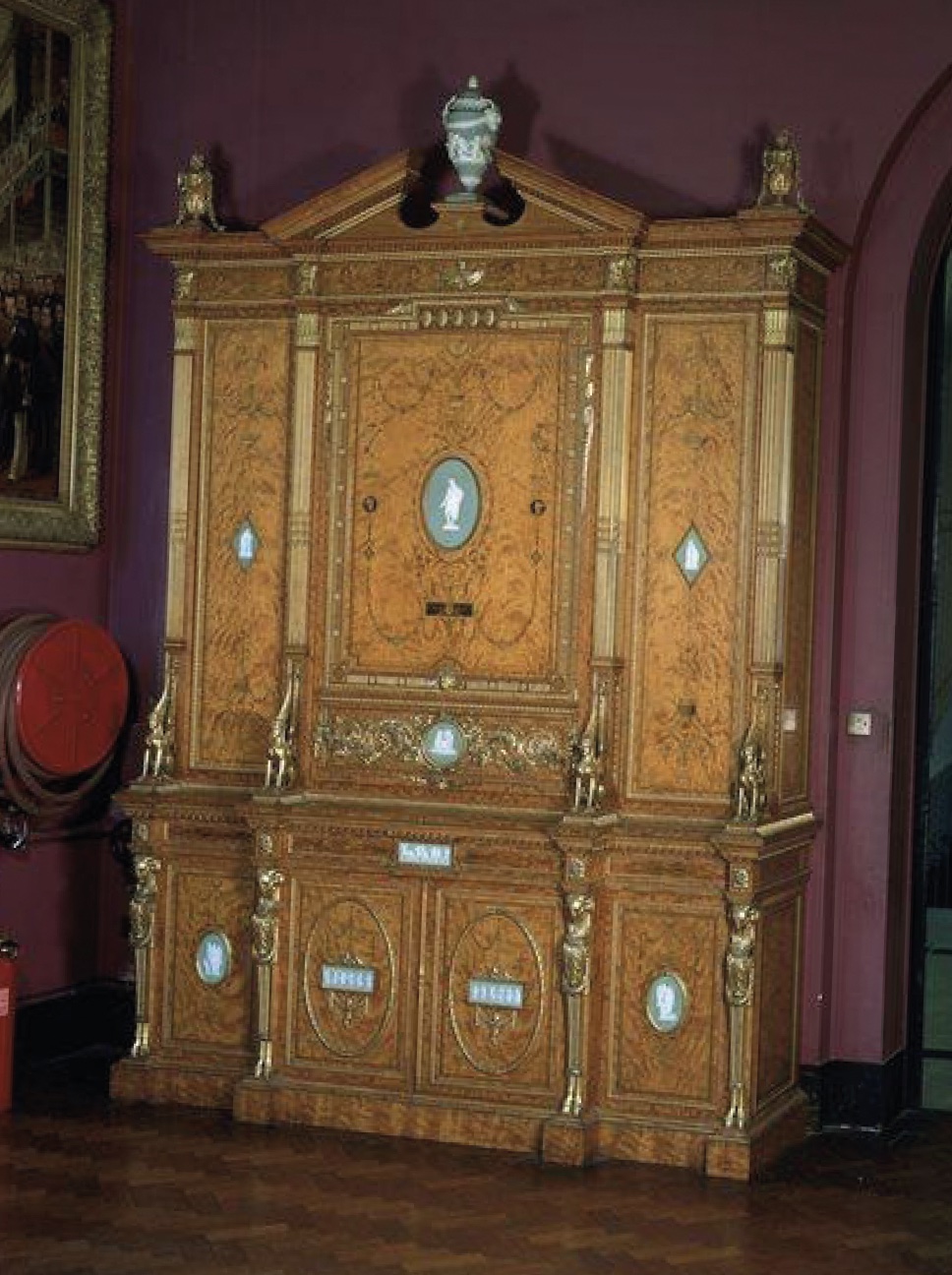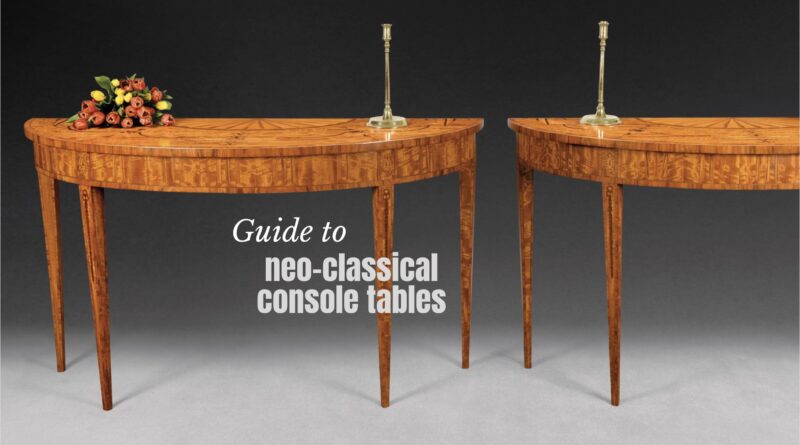Guide to a pair of neo-classical consoles
Antique furniture expert David Harvey discovers imitation is the finest form of flattery when it comes to a fine Victorian interpretation of a pair of neo-classical consoles
Although for the past seven decades Harvey’s has become well known for pieces dating from between about 1680 and 1840, when my father started the company back in 1951 it was selling Victorian and Edwardian furniture to dealers all over Europe.
So I know, like me, he would have been unable to walk away from this irresistible pair of late 19th-century console tables which are of the very finest quality of design, materials and craftsmanship.

The colour and grain are of the rarest type, with the satinwood having the most exciting figuring I have seen in years. It is a reminder some Victorian pieces are as worthy of praise as those by earlier makers. While the date is later, the consoles have much in common with the work of celebrated London cabinetmakers Ince and Mayhew a century earlier.
Ince and Mayhew
The partnership of William Ince (1737–1804) and John Mayhew (1736–1811) ran from 1758 to 1804 and was one of the most enduring collaborations in Georgian London’s tight-knit cabinetmaking community.
The partners’ clientele was probably larger, and their work arguably more influential over a longer period, than most other leading metropolitan makers – perhaps even than that of their older contemporary, the celebrated maker Thomas Chippendale.
In some key areas, namely marquetry decoration and popularising painted furniture, Ince and Mayhew led fashion. They worked closely with Robert Adam, most notably for Sir John Griffin at Audley End in 1767, for the Duchess of Northumberland in 1771, for the Earl of Kerry in 1771 and, most importantly, for the Duchess of Manchester in 1775, creating the Kimbolton cabinet.

Neo-classical revival
A century later from designs of Ince and Mayhew, we come to the work of the London makers Wright and Mansfield – one of the most prominent Victorian furniture makers in England and responsible for the very finest pieces in the Adam and Sheraton revival style. Geoffrey Beard’s 1992 book, The Work of Robert Adam, writes: “A firm revival of interest in Adam’s work did not really begin until 1867, when Wright and Mansfield, a London firm of cabinetmakers, won the highest honours at the Paris Exhibition for a superb Adam-style cabinet.”

Established at 184 New Bond Street between 1860 and 1886, Wright and Mansfield were described in volume two of the 1880 edition of The Cabinet Maker and Art Furnisher, as “… the leaders of that pleasing fashion which was happily brought back into our houses many of the charming shapes of the renowned 18th-century cabinetmakers.”
A much more recent book by Hugh Roberts and Christie’s international deputy chairman, Charles Cator, (who trawled private family archives, county record offices and bank archives to identify work by the pair) Industry and Ingenuity: The partnership of William Ince and John Mayhew, has proved a valuable source of information.
Swagged husk chains
It is widely accepted that Wright and Mansfield both admired and copied pieces made by Ince and Mayhew in the neo-classical style a century earlier. When we look at the tops of this pair of consoles in question (below), the similarity is striking. We see much of the iconography of Ince and Mayhew, including the elliptical tops with a central fan sunburst and classical urns alongside swagged husk chains held by griffins. The square tapering legs are also typically neoclassical in style.

There are many illustrations which illustrate Wright and Mansfield’s obvious admiration for the works of Ince and Mayhew, but possibly the clearest example is their copy of the demilune commode (below) based on the demilune commode Ince and Mayhew created (to Adam’s design) for the Countess of Derbyshire in November 1775.

Plans for the original design show how the earlier makers combined strongly contrasting, richly-engraved satinwood and harewood marquetry in an ‘Etruscan’ taste with painted panels and giltbronze mounts. I have shown both the original design and a copy by Wright and Mansfield.

It has been a privilege to acquire this outstanding example of Victorian craftsmanship and I look forward to carrying out further research on this brilliant pair of tables. The foresight of the V&A in London in acquiring a selection of Wright and Mansfield pieces will be appreciated for generations to come and I would like to thank colleagues for their research in articles for the Furniture History Society and other publications.
Robert Adam and the neo-classical
Much has been written about the neo-classical period of the 18th century, on which the consoles are based. The greatest proponent of the style was the architect and designer Robert Adam who, with his brother James, moved taste from the mid-century rococo, gothic and Chinese style towards the iconography seen in their projects from Harewood House in west Yorkshire to Osterley House in west London.

For the first time the interior and exterior of a house were designed as complementary and the carpets, walls and ceilings were also designed in harmony. Furniture also reflected the new taste, none more so than in the Kimbolton cabinet, designed by Adam, and made by Ince and Mayhew for the Duchess of Manchester in the 1770s. Mounted on the cabinet are 11 pietra dura panels showing romantic seascapes and mountainous pastoral scenes.
David Harvey is the owner of Witney-based W R Harvey & Co. (Antiques) Ltd. For more details go to the website www.wrharvey.com

